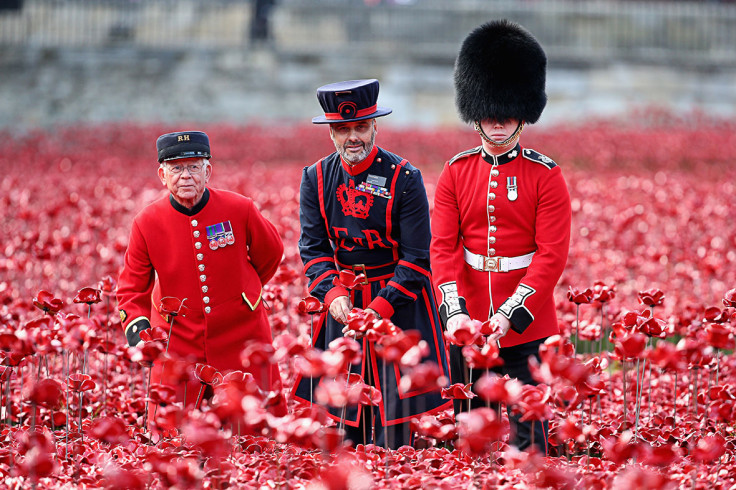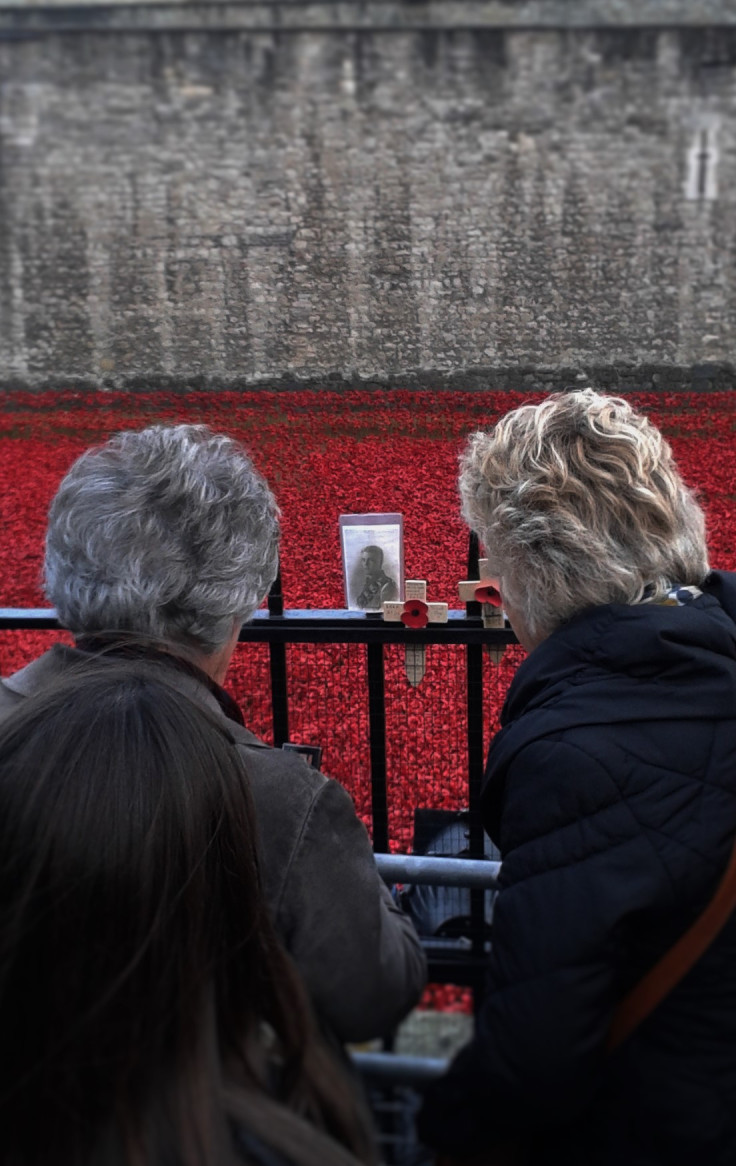Tower of London Poppies: A Sombre Spectacle to Commemorate Britain's Fallen in WWI

Tower Hill is busy. It has been for weeks since they started filling the Tower of London's old moat with ceramic poppies to mark 100 years since the start of the First World War.
There's a steady murmur of mumbled asides and whispered memories, but the large crowd is mostly locked in a contemplative focus on the spectacle in front.
In total there are 888,246 of these red poppies, one for every single British soldier - including those fighting from Commonwealth countries - who died in the Great War. They were created by ceramic artist Paul Cummins, with the setting by stage designer Tom Piper.
Piercing through the sombre hum comes a jarring screech. "Oh. My. God," says a young American woman as she catches her first glance of the poppy flood.
The scale of the moving scene at the Tower is what first paralyses your gaze. And thinking about exactly what that scale means, the human cost of that catastrophic war, holds you there.
Tall wooden boards line the upper railings alongside the road, blocking the view. A tool to prevent pedestrians clustering in awe as they catch sight of the poppies, blocking the pathway towards the City of London in one direction and Tower Bridge in the other.
Each poppy is the same, but they represent hundreds of thousands of unique stories from across the world. The Yorkshire farm hand plucked from northern England to die in Flanders' muddy fields. The Mumbai street hawker signed up to the Empire's army and dropped thousands of miles away into the thunder of battle.
On the railings, a small wooden cross has been attached in front of a black and white photo, slightly faded. It shows a handsome young man in army uniform smiling warmly at the camera.

Private William Henry Herbert Dack. Twenty-one years old. Killed in the Battle of the Somme, 1 July, 1916. "Thank you," is written in black ink along the horizontal piece of the cross.
Moving through the crowd, whispers of family history are caught in the chilly November wind.
"My mum's brother… She never got over Percy… He failed the entrance test, thank god."
A screaming child shatters the mood. "Mum! Mum! Mum!" he wails as he is carried away from the poppies, an echo of the medics stretchering wounded boys from the battlefield as they called out for their mothers.
It has been argued that the poppy memorial at the Tower of London is too tame a representation of the horrors of the First World War, which claimed around 20 million lives in all.
The stench of rotting flesh and fetid mud in the trenches. The men sent to be shredded into oblivion by industrial weaponry. The broken survivors with missing limbs, half-burned faces and a life sentence of emotional anguish over what they had been through.
"I strongly believe that an adequate work of art about the war has to show its horror, not sweep the grisly facts under a red carpet of artificial flowers," wrote the critic Jonathan Jones in the Guardian, adding that he would would "rather see the moat of the Tower of London filled with barbed wire and bones".
The unending misery of the First World War is lost on no-one who knows anything about it, which is most of us. The purpose of the iconic poppy is to be a subtle reminder of the loss, to indicate that the lives of those who died will not be forgotten.
But the poppy itself is not just some saccharine floral tribute. It evokes the fields of poppies in France and Belgium under which so many men lay in their final sleep. Its colour is also evocative of the battlefields for obvious, if grim, reasons.
This is not unnoticed by the visitors to the Tower moat. A middle-aged Lancastrian woman takes a deep breath and holds her hand up to her mouth as she looks down to the Tower for the first time.
"Gosh," she says, pointing to the hole - like a bullet wound - in the Tower wall from which the poppies first emerge. "Look at it flowing out. It's like a river of blood."
There are arguments about how long the poppies should stay there. Boris Johnson, mayor of London, wants them there for the whole year. Others have suggested they stay until 2018, which will mark the centenary of the end of the war.
But the poppies will come down on November 12, the day after Remembrance Day, and be shipped off to those who have bought them. The money will go to military charities and we will be left with photos.
Nevertheless, the eye-catching images will remain in the memories of those who came to the Tower to witness one of the most stunning - yet, in a very British way, most modest - memorials to fallen soldiers the world has ever seen.
© Copyright IBTimes 2025. All rights reserved.




















